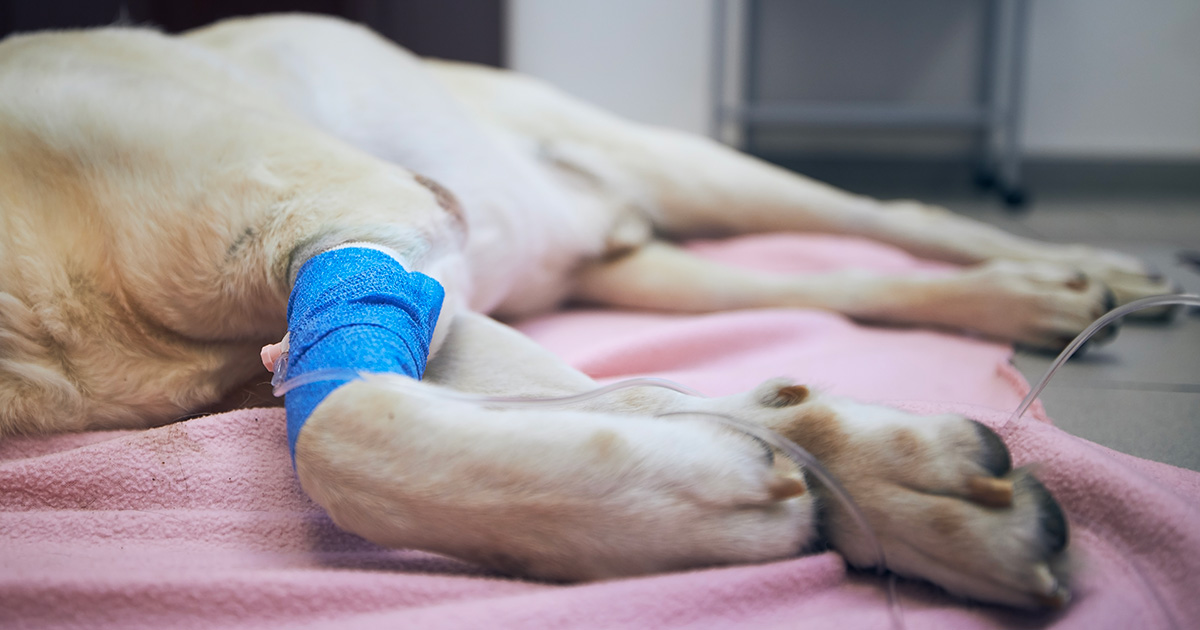I think your first PTS as a new graduate is a significant moment across the board; there’s nothing that truly prepares you for it, as it’s very unlikely you’ll have seen many during work experience placements. Personally, I hadn’t seen a single one with the owner present.
Your university might try to prepare you by running simulations with actors or getting you and your cohort to talk through various scenarios, but, for me, the experience was always quite awkward and in no way mirrored the true experience.
Normalisation
Being able to alleviate suffering is a privilege – I’ve known that since long before vet school – and while that makes euthanasia easier in some respects, it’s still an incredibly tough thing for veterinary professionals to experience on a sometimes daily basis. We know that on some level it affects us. In fact, it’s thought to be one of the primary reasons why the profession has been in such a long-standing mental health crisis.
What probably compounds this issue is the normality with which euthanasia is slotted into a regular day of consults. You can go from an incredibly sad and intimate moment with an animal and their owners – a moment so significant it will likely stay with those owners for days to come – to another routine consult about ears or eyes or diarrhoea.
No time for time outs
There are so many resources out there now for vets struggling, for whatever reason that might be, but I think it should be more widely accepted that sometimes a brief “time out” is necessary after something as potentially emotionally draining as a PTS.
A cup of tea, a quick walk outside or a chat with a colleague might be all that’s needed to reset for the rest of the day. Still, sadly, I’m not sure that this is something factored into the majority of practice life – and considering the increasing demand for veterinary consults, it’s not always feasible from a time management perspective either.
Being able to emotionally recharge between consults is something that not only benefits the vet, but the clients as well. We want to be the best for our owners, to offer comfort however we can, to provide empathy, advice or just companionship in silence when nothing needs to be said. We can only do that, day in and day out, if we are able to decompress when things get a little too much. Even the best vets are affected by work – sometimes when they least expect it. It’s impossible to be surrounded by such raw emotion and not have some wash off on you.
Support network
“Having to put animals to sleep” is one of the most common reasons I’ve heard from friends and family as to why they never considered being vets. It’s certainly understandable, but I’m not sure somebody outside of the veterinary profession can appreciate that it’s not really that cut and dried.
For my first few euthanasias, I felt very grateful that I had a stunningly supportive network of colleagues around me, constantly checking in with me or asking if I could benefit from another body in the room.
I also feel very lucky to have a mother who, as an NHS veteran, has faced similar challenges from a medical “mental load” perspective, and can often offer counselling in a way that not many would be able to.
Welfare neutral
One thing that has always brought me comfort, through my most difficult end-of-life cases, is something a lecturer once repeatedly told my year several times throughout the same lecture: euthanasia is welfare neutral; it is the complete absence of suffering, and sometimes that is the best we are able to offer our patients.
I do feel lucky that I am able to offer it, and believe it is a privilege to relieve suffering and provide dignity and peace to my patients.

Leave a Reply